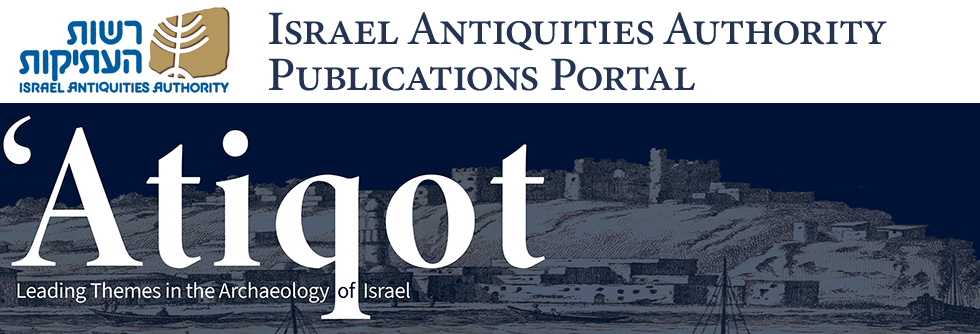Abstract
A small assemblage of faunal remains was recovered from four archaeological contexts excavated on the northern bank of Naḥal Refaʼim. These include Bronze Age rock-cut pits (Area 100), a structure (Area 300), a burial cave (Area 500) and an Ottoman-period shomera (Area 400). The remains represent almost exclusively domestic taxa—sheep, goat, cattle and donkey—some of which exhibit butchery marks, other modifications or burning. The faunal assemblage from the pits, together with other complementary data, may attest that the pits were used as favissae (cultic storage pits) associated with ritual activities at the site.
Keywords
fauna, zooarchaeology, cult, ritual, burial, butchery, burning, favissae
Recommended Citation
Kolska Horwitz, Liora
(2024)
"Intermediate Bronze Age Fauna from a Suspected Cultic Area at Nahal Refaʼim,"
'Atiqot: Vol. 116, Article 14.
DOI: https://doi.org/10.70967/2948-040X.1135
Available at:
https://publications.iaa.org.il/atiqot/vol116/iss1/14
Included in
Agriculture Commons, Biblical Studies Commons, Christianity Commons, History of Art, Architecture, and Archaeology Commons, Islamic Studies Commons, Science and Technology Studies Commons, Urban Studies and Planning Commons

